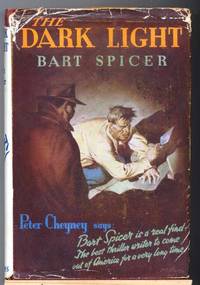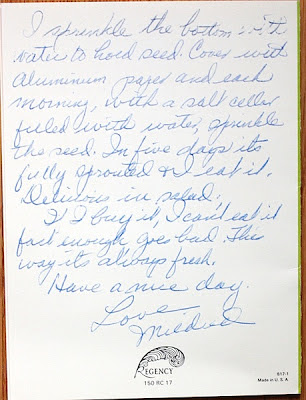Here's another well known character who is most assuredly not completely forgotten, but I think the novels are at least overlooked these days. No doubt many people are familiar with Simon Templar in one of his many TV or film incarnations. I think I had only read one or two stories in my teen years and had never bothered with the novels.
The Avenging Saint (1930) is the US paperback title for
Knight Templar, the third novel featuring Simon Templar and the second part in a trilogy detailing his battle with criminal mastermind Dr. Rayt Marius. It's probably best to read all three in order starting with
The Last Hero (or
The Saint and the Last Hero) in order to get the true effect of the books. Having begun with
The Avenging Saint -- a bracing action-packed thriller -- I feel compelled to go back to the first before continuing onto
Getaway (aka
The Saint's Getaway). The first book is frequently referenced here and the ghost of Norman Kent (the last hero of the first book's title) hovers over this second entry. I want to know him as the man not the memory.
Simon Templar is sort of a forerunner to all the superspy characters that became all the rage in the 1960s. Though he is a direct descendant of the gentleman thief character (he starts off as a criminal with a gang of Robin Hood style thieves) I found The Saint to have more in common with hero pulp characters like Doc Savage and even James Bond.
 |
| Sonia and Vassilloff are married (UK reprint) |
The story is very simple. Templar is out for revenge after one of his friends is killed at the hands of Marius, a weapons expert bent on starting the next world war. There is a kidnapping of a millionaire's daughter, an elaborate plan to arouse the ire of her oil tycoon fiancee by forcing a marriage to a Russian aristocrat. There are confrontations with the villains, daring escapes and rescues, more disguises and false beards than an Arsene Lupin book, fist fights galore, and several jaw dropping stunt sequences. I dare any reader to resist succumbing to the pull of this story.
It all sounds terribly old fashioned like something out of E. Phillips Oppenheim when I reduce it to its bare bones, but it's so breezily told with wit and verve you can't help but get swallowed up. When Templar strips naked, dives into a frigid ocean and single-handedly overtakes a motor boat by punching out one of Marius' thugs, lashing him to the wheel and then manipulating the controls with a makeshift rudder and ropes tied to the tiller while being dragged behind the boat in the water you can only marvel at the preposterous ingenuity of it all. Charteris seemed to have been a born screenwriter rather than a novelist who was decades ahead of Hollywood in terms of stunts and thrills. And he was only 23 when he wrote this book.
Simon Templar alternates between a flippant and condescending adventurer to a stern and humorless Nemesis throughout the book. He can exhibit a gleeful almost boyish attitude calling all the bad guys "sweetheart" and "old dear" in one moment then delivering an expert jab to a rogue's jaw rendering neatly unconscious with that one blow. I think he did this about twelve times over the course of the book. And there is a running gag about how he always looks immaculately dressed after all his fights. He even goes the the trouble of saving his clothes in the boat escapade by neatly tying them into bundle he ties to his head while he's steering the boat. Later, he takes that bundle apart, dresses himself on board the villain's yacht looking as if he's ready to join a posh dinner party. You have to smile and laugh at it all.
Charteris can get carried away with himself though. He has a terrible weakness for purple prose of the gaudiest kind. Here are a few examples:
"The jaws of the perambulating mountain oscillated rhythmically, to the obvious torment of a portion of the sweetmeat which has made the sapodilla tree God's especial favour to Mr. Wrigley." (describing Inspector Teal, a large portly policeman who enjoys chewing gum)
"...and the quintessential part of the plot, so far as Simon Templar was concerned, was how soon -- with a very wiggly mark after it to indicate importunate interrogation."
(I'd just use the question mark and forgo the cuteness)
This kind of silliness tapers off thankfully. I made only five notations of egregious examples of these kind of indulgent lapses. The two above were the most flagrant. As I read on the purple prose either disappeared or I was no longer being critical of the lapses. It was Simon Templar himself who won me over.
Or more precisely Charteris' exuberance for Templar won me over. Whether steering motorboats with ropes while submerged in the sea or descending a rope from an airplane onto a moving train the Saint is the premiere action guy. A superhero whose only super powers are sheer guts and bravado. Forced marriages, bondage ropes, fisticuffs and firearms, the delirious dreams of a warmonger are no match for this one man army. The world of Simon Templar may be old fashioned but I find it utterly addictive. I'm off to read more right now.




























